Legends Galactic History 107: Rise and Fall of the Galactic Empire
1. Introduction
Welcome, budding historians, to the penultimate course in our study of the past. This course covers some of the most famous events in the history of the galaxy, including the Clone Wars and Galactic Civil War. In keeping with previous courses, you will find “further reading” sections sprinkled throughout. While these are optional, we think they offer an opportunity to explore more fully some of the things touched on.
This course covers the events of Star Wars Episodes I through VI with brief mentions of episodes from Star Wars: The Clone Wars television series. All readers are encouraged to experience firsthand Star Wars, both on film and television.
2. Return of the Sith (150 BBY - BBY - 32 BBY)
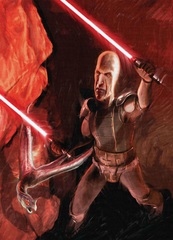
As discussed in the previous course, around 1,000 BBY the Sith were thought extinct. This, however, was by design - Darth Bane had instituted the Rule of Two, which stated there would only be one Master and one Apprentice. This rule held fast as the Sith plotted their ultimate goal of eliminating the Jedi and toppling the Republic, a plan put into motion by Darth Bane and carried forth by his successors.
One of the final Dark Lords of the Sith in this line of succession was Darth Plagueis, born Hego Demask. A member of a famous banking clan, he used his power and prestige to affect the fortunes - or misfortunes - of governments, businesses, and others across the galaxy. However, it was his work as Dark Lord of the Sith that made the biggest impact. Under his legitimate banking guise, he made contact with a young nobleman on Naboo named Palpatine. Born into House Palpatine, he was a disaffected youth and avid collector of Sith relics. Once Demask made contact, he was able to drive a wedge between the young man and his family. This culminated in Palpatine lashing out with the Dark Side after an altercation aboard their yacht, killing everyone aboard. This act served as an initiation, and Plagueis brought Palpatine fully into the cult of the Sith, christening him Darth Sidious. Unlike previous master/student relationships, Plagueis brought Sidious fully into his schemes and attempted to share all of his accumulated knowledge; his goal was to serve as the first among two equals and thus not be killed by his apprentice as all former masters had.
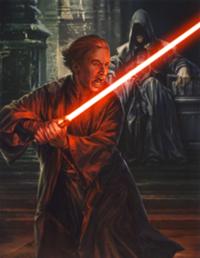
Using their political connections, the Sith Lords plotted to push Darth Sidious, as Palpatine, into a position of power. The previous representative of Naboo and its surrounding planets to the Republic Senate, Vidar Kim, fell to an assassin around 52 BBY. In his place, the people of the Chommell sector elected the thirty-year-old Palpatine. Plagueis and Sidious plotted and schemed for years, stacking the proverbial deck in their favor to put what Plagueis called the Grand Plan into effect. One of the key aspects of this scheme was Palpatine’s rise as Supreme Chancellor of the Republic, at which time he would serve as the public face and Plagueis would serve as a shadow co-Chancellor. To this end, they forced a confrontation between Palpatine’s home planet of Naboo and the Trade Federation that severely weakened the sitting Chancellor and increased Palpatine’s political clout.
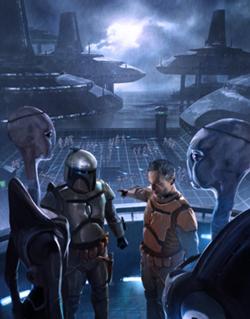
Though Plagueis saw them serving together to rule the galaxy, Palpatine had other plans. The night before he was to be elected to the position of Grand Chancellor, the Sith Lords celebrated in Plagueis’ penthouse apartment on Coruscant, and the older Sith fell into a drunken stupor. Seizing the moment, Sidious murdered his master with Force lightning and became the sole Dark Lord of the Sith.
Meanwhile, under a project originally started with Plagueis, an army of clones was created from the DNA of a Mandalorian, Jango Fett. Though these clones were designed to protect the Republic in the wake of Naboo and with a feeling of civil war imminent, the Sith had different plans for this army. It was almost, but not quite, time for Palpatine’s plan to reach its apex.
Further reading:
* Trade Federation
* Darth Plagueis
3. The Separatist Crisis and Clone Wars (32 BBY - 19 BBY)
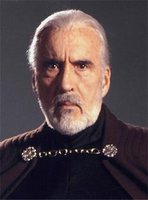
The opening act for the grand finale of Palpatine’s rise started as the cries of many of the Outer and Mid Rim planets were reaching thunderous levels. For years, the Sith had sewn chaos throughout the Republic, and the outlying systems most keenly felt the effects of this disorder. Eventually, these cries turned into action - spurred on by an apprentice of Sidious’, Count Dooku - as many of these systems came together to create the Confederacy of Independent Systems. The Separatist Crisis, as the time of trouble became known, was almost completely the work of the Sith, and led only to the furthering of Palpatine’s power. At the height of the crisis, Sidious was able to capitalize on the fears of the Senate by masterminding a vote that gave him emergency war powers - suspending elections and giving the Supreme Chancellor complete control of the Republic’s military. Using this power, Palpatine called into service the clone army he created, naming it the Grand Army of the Republic. He sent them off to attack the CIS armies of his apprentice, Dooku, in what became known as the Clone Wars. As Sidious told his apprentice, “Everything is going as planned,” it truly was.
The Clone Wars saw Palpatine increasingly consolidate power in the office of the Supreme Chancellor - an office he was now legally allowed to hold as long as necessary - as the two Sith worked each side against the other to achieve their goals. Palpatine reduced the authority of the Jedi Order, piece by piece removing them from power and taking it for himself. The final death knell of the Jedi Order - and, really, of the Republic as it had been known - was the razing of the Jedi Temple (codenamed Operation: Knightfall) on Coruscant by Sidious’ new apprentice, Darth Vader, and Order 66. Each clone trooper that had come out of the cloning vats on Kamino had been imprinted with a series of contingency plans they could fall back on if ordered by their commanders or, in some cases, solely by the Supreme Chancellor. Order 66 fell into the latter category and, when issued, branded all members of the Jedi Order traitors subject to immediate execution. The Jedi, many of whom were embedded with the clone troopers, were gunned down on world after world by their own troops. This Great Jedi Purge would see the complete and utter destruction of the Jedi Order and death of almost every Jedi across the galaxy.
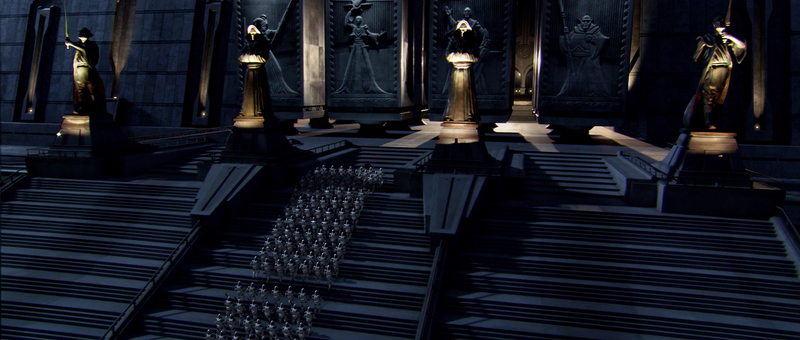
Shortly after his destruction of the Jedi Temple, Sidious ordered Vader to Mustafar, the home of the leaders of the CIS. As an emissary of Sidious, he was allowed through their defenses, but, as his master watched on an open HoloNet transmission, he struck the entire CIS leadership council down to a man. After, the Sith apprentice sent a coded signal out through the HoloNet to all corners of the galaxy that shut down every droid in the CIS armies. Just like that, the Clone Wars were over. Now, it was time for the Republic to be ended and the thousand-year-long plan of Darth Bane to be finally achieved.
Further reading:
* Grand Army of the Republic
* Operation Knightfall
3.1 Darths Maul and Tyrannus
Throughout the Separatist Crisis and Clone Wars, Sidious trained a series of apprentices. Three - Darths Maul, Tyrannus, and Vader - are important enough to warrant mention in this course; we will cover the first two briefly now and the third in the next section.
3.1.1 The Warrior

Darth Maul was a Zabrak born on Dathomir into a group called the Dathomiri Nightbrothers. He was given to Darth Sidious as an infant to be trained in the ways of the Dark Side as a Sith assassin, and he was exceedingly good at it. After completing a brutal training regimen on Mustafar, Maul served as Sidious’ blade. His most famous mission sent him to Naboo, where he was an integral part of the invasion of the planet by the CIS. In addition to being an expertly trained assassin, Maul was overly cocky, and it was this trait that proved his downfall; while fighting Jedi Master Qui-Gon Jinn and his apprentice, Obi-Wan Kenobi (both highly trained in the use of the lightsaber), Maul managed to kill the Jedi Master but was himself killed by Kenobi. Darth Sidious, who regarded apprentices as little more than tools to be thrown away whenever they outlived their use, felt little remorse at the death and moved almost immediately to his next apprentice, Tyrannus.
Further reading:
* Darth Maul
3.1.2 The Statesman
Darth Tyrannus, otherwise known as Count Dooku, was a Jedi Master before his fall to the Dark Side. Considered an excellent instructor at the Jedi Temple and one of the best swordsmen of his era, he was also wealthy beyond belief as the hereditary Count of the Serrano system. However, he grew disillusioned with the Jedi Order and turned to his friend, Palpatine, when he revealed himself to be the Sith Lord Darth Sidious. He had an important place in Sidious’ Grand Plan as the political leader of the Separatist movement and Confederacy of Independent Systems, and together the two Sith, master and apprentice, were able to push the Republic to the brink of destruction. Much like Maul, however, he eventually outlived his usefulness, and during the Battle of Coruscant was slain by Anakin Skywalker aboard the CIS flagship, the Invisible Hand.
Further reading:
* Darth Tyrannus
4. The Galactic Empire (19 BBY - 4 ABY)
4.1 The Dark Times
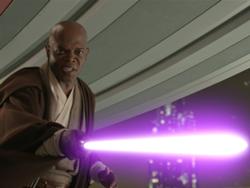
Before the end of the Clone Wars, the Jedi discovered that Chancellor Palpatine and the Sith Lord Sidious were, in fact, the same person. A small number of Jedi Masters, led by Mace Windu, cornered Palpatine in his office and attempted to arrest the Sith Lord. Sidious struck down all the Jedi quickly, with the exception of Windu. After being injured by his own Force lightning reflected back at him, he was able to slay the master swordsman with the help of his soon-to-be apprentice, Anakin Skywalker.
Sidious used recordings of this event when presenting evidence to the Senate that the Jedi had turned rebellious. Everything that in fact he and his apprentices had done - the creation of clones, the Separatist crisis, the numerous assassinations of high-profile Senators - he blamed on the Jedi, and the Senate, already swept up in anti-Jedi fervor, went along. For the “security” of the Republic, Palpatine announced the reorganization of the Galactic Republic into the first Galactic Empire. Obviously, Palpatine maintained his position at the head of this new government and became Emperor, taking even more power and making him, essentially, the sole authority.
The early years of this new Galactic Empire saw increasing centralization of power, the “Imperialification” of important sites (the Coruscant sector became the Imperial sector, Galactic City became Imperial City, etc.), and an elevation of Human men at the expense of non-Humans and women. The Emperor was brutal in his subjugation of those who opposed him and seemingly immortal, having survived multiple assassination attempts. However, there was still a growing group working to overthrow the Empire known formally as the Alliance to Restore the Republic or, informally, the Rebellion.

The Emperor and his subordinates were aware of the threat this Rebellion caused, and set their energy to quelling it. They demonstrated one of their chief sources of instilling terror and ending the Rebel threat on the planet Alderaan, which had Rebel sympathies. In 0 BBY, Grand Moff Tarkin, one of the Emperor’s top lieutenants, commanded the Death Star, a massive battle station two decades in the making. To showcase the power of the Emperor’s new superweapon, and in response to Princess Leia Organa of Alderaan’s refusal to tell him the location of the hidden base, Tarkin fired the Death Star’s superlaser at Alderaan, obliterating the planet and all its inhabitants.
4.2 A New Hope
Instead of breaking the spirit of the Rebellion, the destruction of Alderaan served to strengthen the resolve of those fighting. During the Battle of Yavin, Rebel starfighters penetrated the defenses of the Death Star and one, piloted by a young man from Tatooine named Luke Skywalker, launched a pair of proton torpedos through an unarmored exhaust port that led directly into the battle station's reactor core, blowing it up from the inside.

Skywalker, who was actually Darth Vader’s son, was strong in the Force and had received basic training in the ways of the Jedi by Obi-Wan Kenobi before the elderly Jedi had been struck down by Vader. He received additional instruction from former Grandmaster Yoda on the planet Dagobah. The Emperor was keen to corrupt young Skywalker and turn him to the Dark Side, possibly to replace Vader (who had outlived his usefulness), and attempted to do just that aboard the second Death Star. With the Battle of Endor raging around them, Vader and his son dueled in front of a gleeful Emperor; as with all previous apprentices, it would take a major dark act to solidify Luke’s fall to the Sith, and killing his father would be just that.
However, Skywalker managed to check his anger, stopping himself from falling to the Dark Side. Enraged, the Emperor decided to punish Skywalker before killing him, and struck the young Jedi with Force lightning. Seeing his son being murdered in front of him was too much for Vader, and before the lightning could kill Skywalker, the injured Vader grabbed the Emperor and threw him into the reactor shaft. Plummeting to his death, the Emperor managed to strike out with the Force one last time, destroying Vader’s life support systems, but the two Skywalkers – father and son – were able to spend a brief moment together before the now-redeemed Anakin died in his son’s arms.
With the Emperor’s death, the Imperial fleet was bested, and the second Death Star met the same fate as its predecessor. With both Sith master and apprentice dead, the Sith lineage that traced back a thousand years to Darth Bane ended. Beyond that, the back of the Empire was broken, and the Alliance to Restore the Republic was successful in their mission.
Further reading:
* Death Star
* Battle of Yavin
4.3 Darth Vader

The Emperor’s apprentice during the Galactic Civil War was Sith Lord Darth Vader. Born Anakin Skywalker on the planet Tatooine, he was discovered by Jedi Master Qui-Gon Jinn, his Padawan Obi-Wan Kenobi, and Queen Padme Naberrie Amidala of Naboo. After taking part in the Battle of Naboo, Kenobi (now a Jedi Knight) took Skywalker as his Padawan. Many on the Jedi Council believed Anakin might be the prophesied “Chosen One,” destined to bring balance to the Force, but as he got older and became a Jedi Knight, Anakin grew more and more estranged from the Order. He was growing close to Senator Palpatine – who, as Darth Sidious, was grooming him – and, in violation of Jedi norms, secretly married Amidala (now Senator of the Chommell sector, replacing Palpatine). When he saw a vision of his wife dying in childbirth, Skywalker reached out to his “friend” Palpatine, who revealed his true Sith nature and told him that only the Sith had the ability to save his wife’s life. After Mace Windu led a small number of Jedi Masters to confront Darth Sidious, it was Skywalker who stopped Windu from killing Palpatine, severing his sword arm and allowing the Sith to kill Windu.
This was his first major step toward the Dark Side, but Sidious needed more to fully cement him as his apprentice. That turned out to be the newly-christened Darth Vader’s actions during Operation: Knightfall. Under Sidious’ direction, Vader took the 501st Legion of clone troopers to the Jedi Temple and slaughtered every Master, Knight, Padawan, and even Youngling in the building. After then killing the Separatist Council on Mustafar, Vader and his old master Kenobi dueled on the bank of a river of lava before Vader lost his legs and arms to Kenobi’s blade. The Jedi left him to die, but he was recovered by Emperor Palpatine, who went to great (and painful) lengths to reconstruct him into a towering, black-armored cyborg. It was thus that he became the feared enforcer of the Emperor’s will and stayed as such until his defeat of the Emperor – proving that he was, in fact, the prophesied Chosen One - finding redemption in death.
Further reading:
* Padme
5. Conclusion
This was one of the most tumultuous periods of time in the history of the galaxy, and even this lengthy course can only scratch the surface. There are simply so many threads that made up the tapestry that is the story of the Clone Wars and the Galactic Civil War; for that reason, more than any other course in this series, we highly recommend perusing the further reading sections spread throughout, and of course, go watch Star Wars. You truly won’t regret it. With that, good luck on your exam!
Information for this course was researched using Wookieepedia.
Please log in to take this course's exam